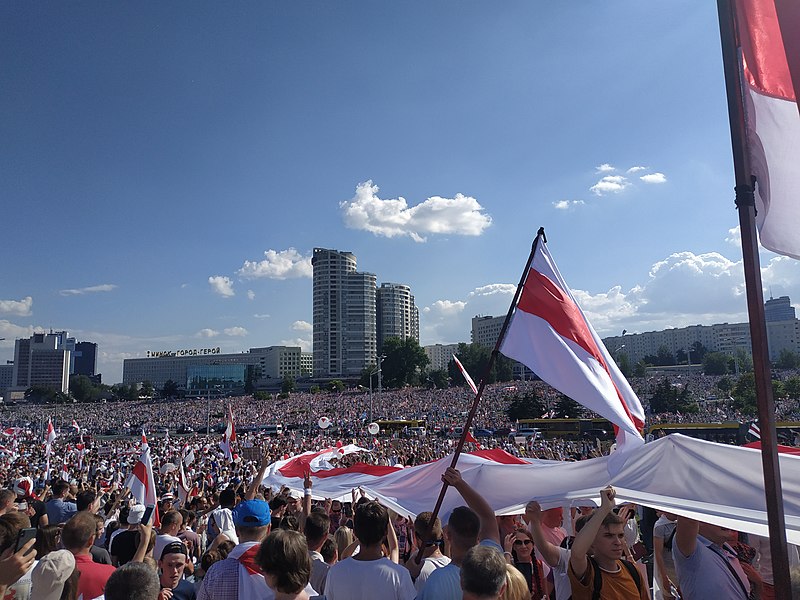The people of Belarus have been going out on the street for nearly a month now, showing no signs of backing down. Even the threat of violence has not stopped protestors. Sunday, September 6th, tens of thousands of people gathered in Minsk despite warnings that the authorities would crack down on them.
Meanwhile, Lukashenko has been trying to break up the opposition, mainly by detaining or expelling its leaders. Svetlana Tikhanovskaya, Lukashenko’s main challenger in the August 9th elections, left Belarus a day after the election under pressure from the authorities. The 7th of September, Maria Kolesnikova, another opposition leader, was detained after she refused to leave the country. Kolesnikova tore up her passport at the Ukrainian border, after officials had told her to cross into Ukraine. Along with this, several members of the opposition’s Coordination Council have been expelled or detained. The authorities have tried to strike down street protests, cordoning off parts of the center of Minsk for example. However, the protestors then relocate to other parts of the city and continue putting pressure on Lukashenko.
With their leadership detained or expelled, and over 700 arrests in the last week, the opposition has had to use other tactics besides street protests to put pressure on Lukashenko as well. For instance, activists have called for a financial boycott, in order to destabilize the financial market.
Through messaging app Telegram, activists have been urging people to buy foreign currency in order to destabilize the rouble and boycott state enterprises. The rouble has fallen since last year against both the US dollar and the Euro. The destabilizing of the rouble is furthered by the tough economic situation Belarus was already in. Lukashenko has called the people involved with this economic protest “rascals,” stating that he will not allow them to collapse the national currency.
Next to these financial actions, activists have been using a white-red-white flag to show their opposition to Lukashenko. The flag comes from the early 20th century, during the Belarusian People’s Republic (BNR). It only lasted for a few months due to World War I, but the flag became a nationalistic symbol nonetheless. White and red flags, ribbons and posters have been hung up all around Minsk now and students have started wearing red and white to their classes.
Activists have been trying to break up Lukashenko’s support. So far, the Belarusian ambassador to Slovakia has resigned, showing his support to the protestors. Along with this, activists have been in contact with MP Valery Voronetsky, who expressed his dissent. This shows the start of a breakdown on the highest political level.
Despite these alternative protests, the street protests still ongoing may be the most visible protests. The fact that so many have been detained and violence has been reported from the authorities against protestors, shows the perseverance of the Belarusian protestors still going out into the streets.
Sources:
DW 1, DW 2, DW 3, Aljazeera, The Guardian, Charter97, DW 4, Politico
Photo: Wikimedia Commons



